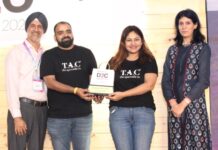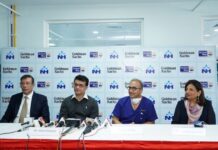New Delhi, March 29, 2018: Management teams were generally optimistic on the outlook for domestic Indian markets, with sales growth expected to be in the low double digits, rebounding from GST led disruption.
Post two years of significant underperformance, positioning remains light in the India Pharma sector given multiple headwinds and relatively expensive valuations vs. global peers/Nifty. To gain insight into latest developments and trends, and get a sense of how things are on the ground for our covered companies, we recently hosted our 10th fieldtrip in India. We visited all elements of the healthcare value chain, including CEOs and Promoters from pharma companies (Covered and Non Covered), ranging from generic manufacturers, MNC subsidiaries, CRAMs/API manufacturing-focused firms (such as Piramal and Dishman), as well as marketing organisations (such as Eris). The key headwinds: US price erosion, slower pipeline monetisation and regulatory compliance overhang do not seem to be abating in a hurry, and we expect 2018 to remain a challenging year for our coverage according to financialexpress.com.
Management teams were generally optimistic on the outlook for domestic Indian markets, with sales growth expected to be in the low double digits, rebounding from GST led disruption. The outlook for US generics (40% of revenues) remains tough with many of the companies expecting a further decline in prices, even though the pace of decline is set to slow given the commentary from several companies who talked about trimming their portfolio in response to weaker pricing. The read-across from these meetings reinforces our view that the pricing environment will remain challenging for our coverage in 2018.

US generic price erosion stable
While most pharma companies we met suggested that price erosion was stabilising, they were mixed on the quantum, ranging from high single digit to low teens deflation, probably a function of their product concentration. We continue to bake in 12% annual deflation for our coverage through to FY20 given: (i) more frequent repricing by buyer consortiums, (ii) shorter approval timelines on commoditised products and (iii) relatively higher gross margins for the group vs. global peers.
Complex generics getting delayed
While there has been focus from the US FDA to reduce hurdles for complex generic development, they have also been seeking more data before approving first time generics — gWelchol, gCopaxone, gAdvair, to name a few. Given this backdrop, we note that launch strategies for the players in the past 12-months were split between a basket approach (Aurobindo, Cadila) vs niche launches (Sun, Dr. Reddys, Natco).
Varied biosimilar strategy
Recent approval success on biosimilar Herceptin has brought the spotlight on this space. Focus seems to be on monetising through partners (Mylan, Sandoz) in regulated markets (Biocon) given the long gestation, higher investments and complex regulatory pathway. A lower risk commercial launch strategy was highlighted for the emerging markets (Dr Reddys, Cadila) where the approval pathways are less restrictive.
Higher bar for sterile manufacturing
We note that the FDA expects higher level of compliance at sterile manufacturing facilities (vs. orals) and this has manifested in several aseptic processing observations. Most companies believed that a combination of prevailing hygiene culture and rising quality benchmarks have led this segment to be a difficult proposition. However, given the healthy product margins, most still remain committed to the longer term.
Company specific takeaways
Sun Pharma: Sun Pharma is focused on resolving the three pending observations at its Halol facility, but expects the ramp thereafter to be gradual. Tildrakizumab is expected to launch in 2HFY19. Odomzo’s label expansion and entry into Germany bodes well for offtake.
Aurobindo Pharma: Aurobindo is responding to the USFDA with proposed remediative action on the nine observations received at its Unit 4 plant in February. Trials on biosimsilar Avastin should begin soon. Management is confident of growing the injectables business. Key near-term pipeline opportunities include ertapenem, Welchol, Angiomax and Toprol XL.
Dr Reddy’s: Dr. Reddy’s is non-committal on the trajectory of US market growth. The company should respond to a CRL on gCopaxone by June, gSuboxone could be a Q3CY18 launch (potentially on an at-risk basis), and an FDA response on the gNuvaring submission is expected by Q3CY18. An IPR challenge by it on gRevlimid is unlikely financialexpress.com further added.
Cipla: Cipla India and Rest of the World business continues to subsidise R&D investments directed at the close to breakeven US business. Given its presently small scale in the US, this market is still offering the biggest opportunity for Cipla despite all the noise around pricing pressure and regulatory compliance.
Glenmark: Glenmark is excited about prospects for nasal spray candidate Ryaltris (GSP 301) which it intends to commercialise next calendar year, and believes it has a good chance at outlicensing atopic dermatitis candidate GBR 830 soon. It believes it has a headstart on the XOLAIR biosimilar under development and is guiding for annual ex-US growth in the teens.

























